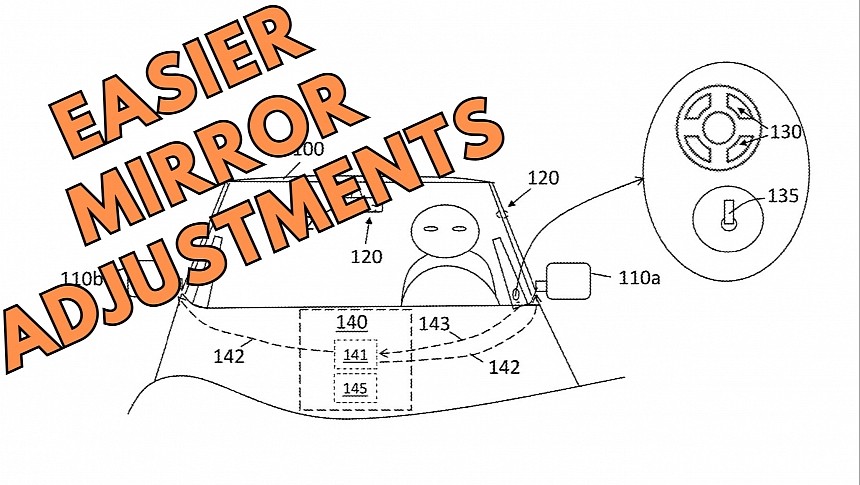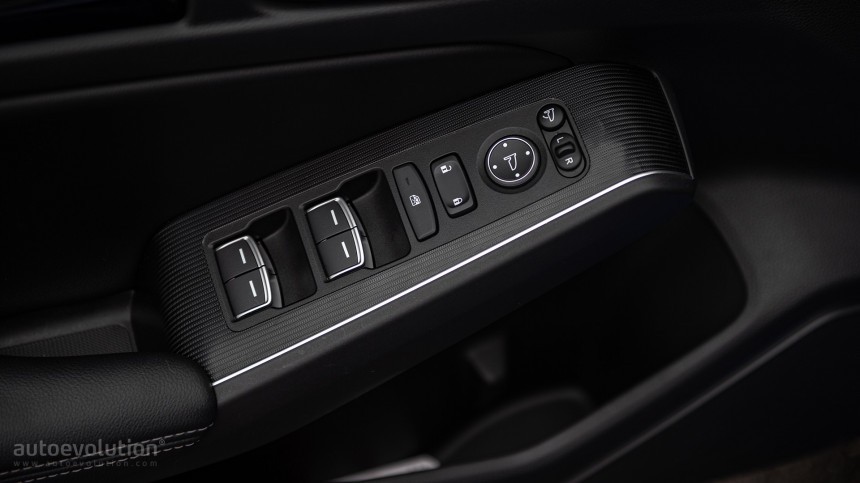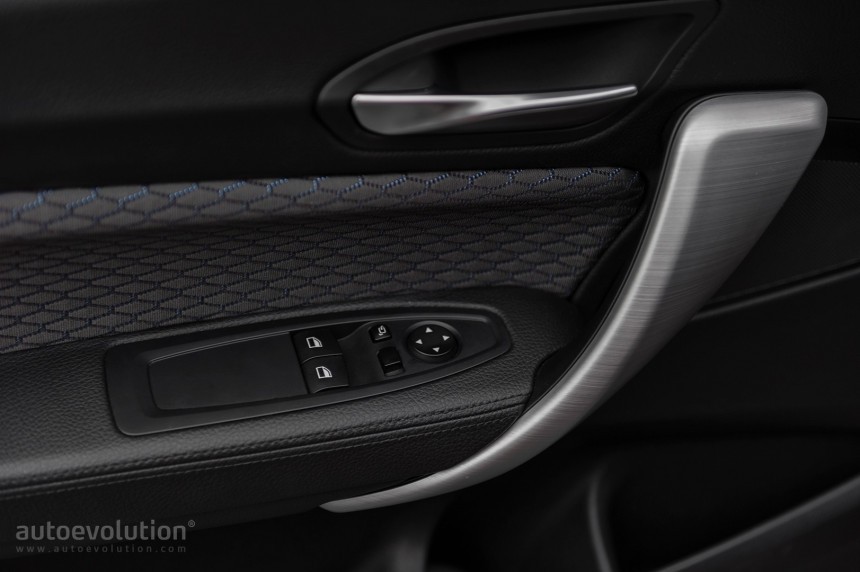The vehicle mirror selection button, which allows users to select a specific mirror for quick adjustments, could soon go dark if General Motors starts the mass production of a recently patented system.
Correctly setting the side mirrors is critical for every driver, mainly because eliminating blind spots improves safety behind the wheel.
Most cars already have power mirrors, so users must select a mirror to adjust (typically with a dedicated button on the driver's door) and then make the necessary adjustments to obtain the perfect angle and position for maximum visibility.
Older cars or low-budget models not boasting power mirrors come with a joystick for manual adjustments, whereas other vehicles sport a direction control button for more convenient settings.
General Motors wants to get rid of the dedicated button used for selecting a mirror to adjust, and to do this, the company proposes a new-generation system that involves zero driver input.
The company explains in a patent called "vehicle mirror selection based on head pose and gaze direction" that drivers could select the mirror the adjust by simply looking at it. The button would become redundant, and General Motors says it could make the operation more straightforward (and also get more space on the driver's door).
General Motors explains in the patent filing that the technology required for such a system is already present in modern cars. Cameras used to track the head pose and the gaze direction power driver monitoring systems to prevent falling asleep or distracted driving. The same hardware should determine values that General Motors could use to detect when the driver looks at either mirror, eventually letting them conduct the typical adjustments.
The American carmaker says it can train a machine learning system to combine data from the head pose and gaze direction, with the algorithm eventually determining if the driver wants to adjust a mirror. A check is determined almost in real-time, and General Motors' technology can activate the control buttons for the corresponding mirror. If the driver doesn’t look at the mirror, but their head turns towards either side, the mirror adjustments are blocked until the driver manually triggers the control buttons.
General Motors' approach should help prevent false positives, allowing drivers to adjust buttons even when the system doesn’t accurately detect the head pose and the gaze.
The main benefit of such a mirror-adjusting system applies to cars with multiple drivers. A driver might require different mirror settings depending on the seat adjustments and their height. If it gets the green light, GM's idea would allow more convenient mirror adjustments from one driver to another.
While the company doesn’t seem interested in giving up on the control buttons, future versions of the same concept could also allow for automatic adjustment.
A camera integrated into the side mirror could help determine the correct settings according to the driver's position behind the wheel based solely on their head pose and gaze direction. This method would allow for on-the-fly adjustments without any driver intervention. The main shortcoming is the added hardware cost, as an upgraded system version would involve more cameras integrated into the side mirrors.
The current proposal relies entirely on hardware already available in cars, such as the driver monitoring systems mentioned above. General Motors could, therefore, bring this system only to top-of-the-range models where such technology is available.
The American carmaker looks committed to bringing new-generation technology to its cars, and the transition from phone projection systems to an embedded operating system powered by Google is living proof. The company will block Android Auto and CarPlay in its cars. Starting with the 2024 Blazer EV, GM's zero-emission vehicles would run Android Automotive exclusively.
In theory, Android Automotive is a fully featured operating system that can also run Android Auto and CarPlay. General Motors says it'll block screen mirroring in its cars to provide drivers with an upgraded experience that wouldn’t otherwise be possible without Android Automotive. Other carmakers, including Polestar, installed Android Automotive in their vehicles without blocking phone projection like CarPlay.
Critics believe General Motors' transition from Android Auto and CarPlay to Android Automotive paves the company's strategy of turning subscriptions into a money-making machine. The carmaker claims it won't charge customers for Android Automotive access in the first eight years after the purchase. Eventually, the company might only allow certain services based on a monthly fee.
Potential customers received GM's decision with much criticism, especially as the adoption of screen mirroring systems has reached record levels. Apple data indicates that nearly 80 percent of new-car buyers in the United States wouldn’t even think of getting a vehicle without CarPlay, as the system is considered a must-have piece of equipment for modern drivers.
You can check out GM's new idea in the patent embedded below, but considering it's still in the patent stage, you'd better not hold your breath for a production version.
Most cars already have power mirrors, so users must select a mirror to adjust (typically with a dedicated button on the driver's door) and then make the necessary adjustments to obtain the perfect angle and position for maximum visibility.
Older cars or low-budget models not boasting power mirrors come with a joystick for manual adjustments, whereas other vehicles sport a direction control button for more convenient settings.
General Motors wants to get rid of the dedicated button used for selecting a mirror to adjust, and to do this, the company proposes a new-generation system that involves zero driver input.
The company explains in a patent called "vehicle mirror selection based on head pose and gaze direction" that drivers could select the mirror the adjust by simply looking at it. The button would become redundant, and General Motors says it could make the operation more straightforward (and also get more space on the driver's door).
General Motors explains in the patent filing that the technology required for such a system is already present in modern cars. Cameras used to track the head pose and the gaze direction power driver monitoring systems to prevent falling asleep or distracted driving. The same hardware should determine values that General Motors could use to detect when the driver looks at either mirror, eventually letting them conduct the typical adjustments.
General Motors' approach should help prevent false positives, allowing drivers to adjust buttons even when the system doesn’t accurately detect the head pose and the gaze.
The main benefit of such a mirror-adjusting system applies to cars with multiple drivers. A driver might require different mirror settings depending on the seat adjustments and their height. If it gets the green light, GM's idea would allow more convenient mirror adjustments from one driver to another.
While the company doesn’t seem interested in giving up on the control buttons, future versions of the same concept could also allow for automatic adjustment.
A camera integrated into the side mirror could help determine the correct settings according to the driver's position behind the wheel based solely on their head pose and gaze direction. This method would allow for on-the-fly adjustments without any driver intervention. The main shortcoming is the added hardware cost, as an upgraded system version would involve more cameras integrated into the side mirrors.
The current proposal relies entirely on hardware already available in cars, such as the driver monitoring systems mentioned above. General Motors could, therefore, bring this system only to top-of-the-range models where such technology is available.
In theory, Android Automotive is a fully featured operating system that can also run Android Auto and CarPlay. General Motors says it'll block screen mirroring in its cars to provide drivers with an upgraded experience that wouldn’t otherwise be possible without Android Automotive. Other carmakers, including Polestar, installed Android Automotive in their vehicles without blocking phone projection like CarPlay.
Critics believe General Motors' transition from Android Auto and CarPlay to Android Automotive paves the company's strategy of turning subscriptions into a money-making machine. The carmaker claims it won't charge customers for Android Automotive access in the first eight years after the purchase. Eventually, the company might only allow certain services based on a monthly fee.
Potential customers received GM's decision with much criticism, especially as the adoption of screen mirroring systems has reached record levels. Apple data indicates that nearly 80 percent of new-car buyers in the United States wouldn’t even think of getting a vehicle without CarPlay, as the system is considered a must-have piece of equipment for modern drivers.
You can check out GM's new idea in the patent embedded below, but considering it's still in the patent stage, you'd better not hold your breath for a production version.













